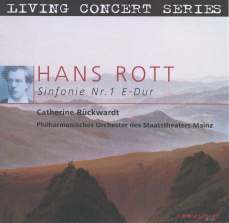Updated
on
January 4, 2025 |
 |
 |
 |
 |
 |
 |
 |
 |
 |
|
|
 |
 |
 |
 |
 |
 |
 |
| |
 |
|
| Christoph Campestrini's still-unreleased
Philharmonia Hungarica performance will be worthy of consideration
if and when it
appears commercially. Where everyone else plays up the score's Innigkeit and Angst,
Campestrini, at tempi more Andante than Adagio,
bathes it in glowing Mediterranean sunshine. His performance
is at once more relaxed and more probing than Samuel's, less
effect-conscious than Davies's or Segerstam's. The outer-movement
climaxes unfold triumphantly, banners unfurled; only the Scherzo feels
heavy and careful. The Philharmonia Hungarica has never sounded
better on record. The brasses are firm and unobtrusively full-throated
(the high horn soli are focused and brilliant), and the strings
are clean and vibrant, a bit dogged in their determination
to articulate everything. The engineers provide both warmth
and definition, while avoiding overload. |
|
| Even in this relatively sparse
catalogue, the remaining performances are uncompetitive. A
well-intentioned 2004 concert
performance from Mainz (Acousense ACO CD 20104) begins promisingly.
Conductor Catherine Rückwardt has a nice way of easing
into themes in the first movement, taking admirable care over
rhythmic precision - the moving flute harmonies “mirror” the
horn theme handsomely - and drawing full, saturated orchestral
tone in the final climax. The slow movement is expressively
phrased, but the playing gravitates toward mezzoforte:
there’s
no reason the start couldn’t have been as soft as the
passage at 1:12. Control begins to wane in the Scherzo,
where the tuttis sound insufficiently sorted out,
especially when string busywork comes into play. The Finale has
its attentive and characterful moments - such as the ominous
brass chorale
early on - but by now the orchestra is audibly fatigued; too
much of the playing is slurry, or generalized in mood. The
reproduction avoids the harshness and congestion plaguing most
of the other versions, but the brass chorales concluding the
slow movement and Finale are hard-toned. |

Philharmonisches
Orchester des Staatstheaters Mainz
Catherine Rückwardt |
| Part 7 |
|
Back to Part 5
|
|